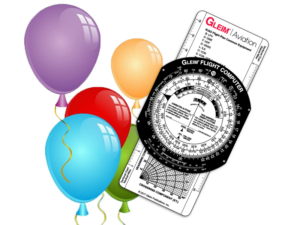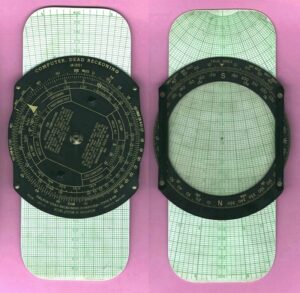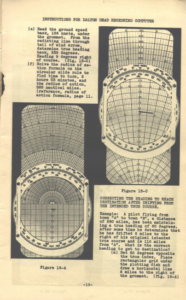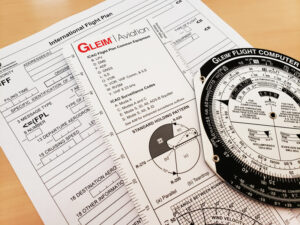 As the E-6B flight computer turns 80 years old in 2020, we pay our respects to the device that has helped millions of pilots plan their flights for eight decades. With the advent of electronic flight bags, modern navigation equipment, and portable electronic devices, the E-6B flight computer is often regarded as an old-fashioned tool used only for FAA knowledge tests and cross-country flight planning during pilot training. But if you’re a pilot, whether you call it an E-6B, whiz wheel, circular slide rule, or prayer wheel, you probably own at least one flight computer, even if it doesn’t ride along on your flights anymore.
As the E-6B flight computer turns 80 years old in 2020, we pay our respects to the device that has helped millions of pilots plan their flights for eight decades. With the advent of electronic flight bags, modern navigation equipment, and portable electronic devices, the E-6B flight computer is often regarded as an old-fashioned tool used only for FAA knowledge tests and cross-country flight planning during pilot training. But if you’re a pilot, whether you call it an E-6B, whiz wheel, circular slide rule, or prayer wheel, you probably own at least one flight computer, even if it doesn’t ride along on your flights anymore.
History of the E-6B Flight Computer
The E-6B flight computer was invented by Philip Dalton, an innovator predisposed to practical physics who graduated from Cornell University in 1924. Dalton also held a master’s degree in physics from Princeton, worked at Harvard, and was a reserve officer for the Field Artillery unit of the training corps. In 1931, he became a pilot at the Naval Aviation School in Pensacola, Florida.

The primitive calculators used for artillery firing at that time were unsatisfactory. Dalton’s desire to improve these models cultivated an interest in mechanical computers more generally. Eventually, discouraged by the lack of innovation, Philip joined the Navy with the promise of aerial navigation at sea. As the personal pilot and navigator for his squadron, his early flight computer devices gathered interest and support.
His innovation allowed airmen to keep one hand on the aircraft controls while making flight calculations by manipulating the rotating discs in a process known as “deductive reckoning.” Later shortened to “dead reckoning,” the process is used by pilots to reconcile their position from heading, speed, and time from a last known position while correcting for wind drift.
Daltons’ missions would commonly have his floatplane launched via catapult from a cruiser in the ocean, then fly a few hundred miles or more straight out before turning back to the ship. The lack of radio communications in the era meant pilots could rely only on their own wits to safely navigate home. The flight computer provided airmen the ability to observe wind drift on two unique headings, allowing more accurate navigation.

The current flight computer design was originally introduced to the Army Air Corps in 1940 as the “E-6B,” which referred to its part number. Following the attack on Pearl Harbor in 1941, the Army Air Forces ordered 400,000 units. The tool was wildly popular among pilots of the era, especially B-17 pilots. Tragically, in July of 1941, Lt. Philip Dalton lost his life in a training sortie with a young navigator.
Sometimes lauded as the key to winning World War II, songs are sang in honor of Philip Dalton’s revolutionary computer. “His computer is the instrument on which he stakes his life… Don’t ask for his computer for he’d sooner lend his wife.” [USAAC Navigator’s Song, 1943]
A trusted calculator in times of adversity, the E-6B is, at its core, a circular logarithmic slide rule, which performs proportional computational calculations. Additionally, the E-6B is able to convert temperature scales, time, distance, fuel burn, density altitude, and a host of other calculations, along with groundspeed and wind drift correction on the flip side.
 You can perform your own one-handed calculations in flight with your very own Gleim Flight Computer. The Gleim Flight Computer also has plotter scales to measure statute and nautical miles, crosswind and headwinds components, holding pattern entry, and was recently updated to include helpful reminders of common ICAO flight plan equipment codes. The E-6B is also included in Gleim pilot kits for sport and private pilot students.
You can perform your own one-handed calculations in flight with your very own Gleim Flight Computer. The Gleim Flight Computer also has plotter scales to measure statute and nautical miles, crosswind and headwinds components, holding pattern entry, and was recently updated to include helpful reminders of common ICAO flight plan equipment codes. The E-6B is also included in Gleim pilot kits for sport and private pilot students.
If you’re a veteran pilot, dust off your old E-6B and see if you can still figure out your mach number index. If you need instructions or want to practice sample flight computer problems, check out our online E-6B Flight Computer Instructions.
Written by Paul Duty, Aviation Product Manager, and Ryan Jeff, Aviation Research Assistant.
Special thanks for the International Slide Rule Museum for their assistance and images provided for this article.

